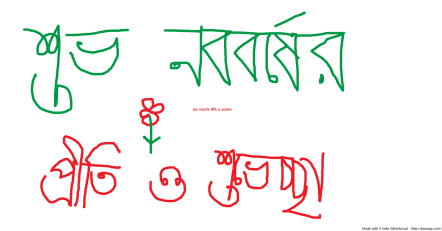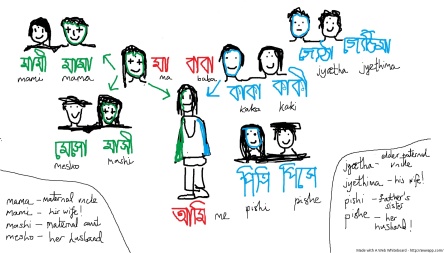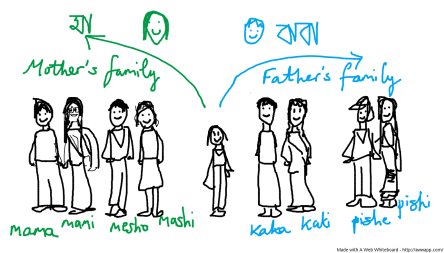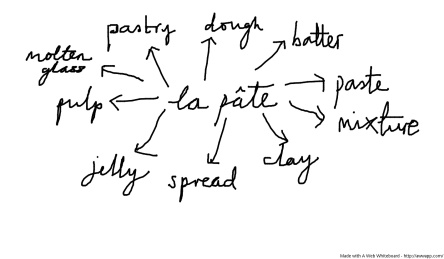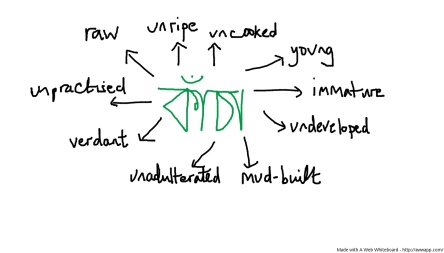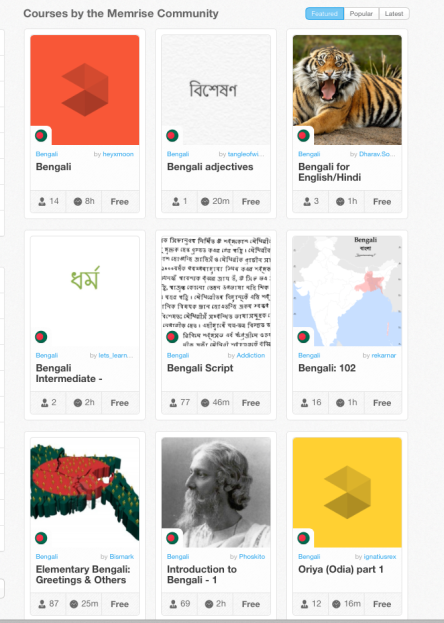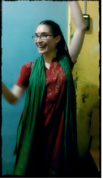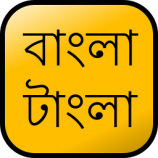 Steve Capell is the creator of the fantastic new website for learners of Bangla, called Bangla Tangla.
Steve Capell is the creator of the fantastic new website for learners of Bangla, called Bangla Tangla.
I talked to him about the background of how he came to create these useful new tools and about his relationship to both Bangla and Bengali culture.
When did you first encounter West Bengal?
I first visited India back in 1996. My wife and I made the decision to move to West Bengal in 2002 and so I’ve lived here for last 11 to 12 years, briefly in Kharagpur, and then the rest of the time in Kolkata.
When did you start your journey to becoming fluent in Bangla?
Becoming fluent is a lot harder than I thought it would be! I first took some lessons from a tutor in Kolkata in 2001; it was only for a couple of months. After I moved here I thought that I would magically learn the rest, but I only made modest progress. Then in 2007-8 I took an evening class as the Ramakrishna Mission Institute of Culture (RKM) in Golpark. Then later in 2012-13 I took an 8 month intensive course at the American Institute of Indian Studies (AIIS). All of these moved me forward, especially the AIIS course, but I still wasn’t fluent. I’ve been telecommuting in recent years and so the opportunities to be out there speaking Bangla to Bengalis who are not fluent in English has been somewhat limited to things like trips to the market. In terms of written materials I liked Teach Yourself Bengali, but I found I couldn’t learn Bangla from it on my own.
What kind of learners did you meet?
The students at AIIS were American college students, learning Bangla for academic purposes. At RKM there were people from around the world, and from a wider variety of backgrounds.
So why did you create Bangla Tangla?
From the very beginning my motivation was to make tools that would be useful to me as I was learning Bangla. My first project, which later became part of Bangla Tangla, was a word frequency list. As a learner, you encounter a lot of words but it’s hard to know which ones are really obscure and which ones are really common. I wanted to focus on learning the common ones first. So I wrote a computer program to scan the articles from the Anandabazar newspaper and count each word, producing a list of words with the more frequently used ones at the beginning. At some point the tools I had created were mature enough that I thought other people could also benefit from them, so I created the Bangla Tangla web site.
What are some of the specific tools available?
As I learned more Bangla vocabulary I’ve built up an online dictionary that can be searched on Bangla Tangla. I’ve also made substantial improvements to two excellent online dictionaries to make them more easily searchable. These three dictionaries can all be searched using an integrated search box. One really unique feature of my dictionary search system is that it does an approximate search. You don’t need to spell the word correctly and you can still find it. And you can search using Bangla script or Roman script. Another tool is the Anandabazar Helper, which shows you the word definitions as you read the Anandabazar Patrika newspaper. If you go click here you will find instructions on how to use this tool.
I’ve also written a tool that can generate a verb conjugation table for any verb. Although every book teaching Bangla has some verb conjugation tables, I could not find a book with all of them. And in the interest of compactness some details are inevitably glossed over, especially obscure shadhu conjugations that you’ll probably never encounter. A web site does not have such space limitations so I have tried to be exhaustive. The huge corpus of words I gleaned from the newspaper helped me understand and verify the different types of verb conjugations, and I also benefited from a high school grammar book written in Bangla, which contained shadhu forms of some of the verb forms. Another tool lets you find articles in Anandabazar that contain a specific word. I use this to learn how words are used in order to come up with definitions for my own dictionary.
I’ve also written an extension for the Chrome browser that helps you look up words in the dictionary while browsing.
What’s ডাঃ মুনসীর ডায়রি (Dr. Munshi’s Diary)?
This is a Feluda story written by Satyajit Ray which was made into a film by Sandip Ray. For Bangla Tangla I have actually made transcription of the whole film of ডাঃ মুনসীর ডায়রি This enables you to read along the transcription as you watch. It takes hours to produce the transcript of just 5 minutes because I go through a number of stages and obtain the help of a native speaker (usually in the form of my wife) to try to approach 100% accuracy. I also define all of the words in the film and add them to my dictionary so that you can look them up just by hovering on the script. So the whole film actually took about two months of part-time work, but it was worth the effort.
Have you seen supriyosen.net?
Yes, it’s an excellent resource for Bangla learners. There is some overlap between it and banglatangla.com. But because my focus is on building tools that I myself find useful as an intermediate Bangla learner, the sites have a different character. Supriyo’s site has instructional material geared toward beginners, whereas my site does not have anything like that.
How do you find it living in Kolkata, having grown up in the States?
I really love the busyness of Kolkata. There is so much activity everywhere, and a yummy snack around every corner. Being an immigrant comes with challenges though. It can be difficult to build deep relationships because you have less in common with people. That’s one of my key motivations for learning Bangla. Even though I am not yet fluent, my Bangla helps me build richer relationships with a more diverse set of people. Of course there is the option to interact with Americans and other foreigners in Kolkata. But they are mostly temporary visitors who see Kolkata through the eyes of a traveller and then go home or move along to another exotic destination.
What are your plans for the future?
I’m currently working on an Android App for Bangla Tangla! But I’ve been working on learning Bangla and building Bangla Tangla for more than a year and a half full-time, and I think it’s time to turn my attention to a new project. So I’m planning to wind down my work on Bangla Tangla sometime soon. I’ll keep fixing bugs and adding words to my dictionary, but I probably won’t create any new tools after the Android App. But who knows, I really enjoy working on this stuff so I may get sucked back into it. I have a long list of things I would like to add to it!
What’s your favourite Bengali dish?
My favourite hands down is ইলিশ মাছ, otherwise known as hilsa fish. I love Bengali home cooking, actually; I find it very healthy. Steaming is often used in cooking here and the vegetables are generally less spicy than the meat, so I think the meals are really well-balanced on the spice front. I’ve found that, although Bengali food is subtly spiced, Bengalis do enjoy spicy food and, in particular, I’ve found the meat curries served at weddings to be very ঝাল (hot)!
Thank you, Steve, and do check out the site now at www.banglatangla.com! If you wish to write to Steve, he can be reached at banglatanglatools@gmail.com
